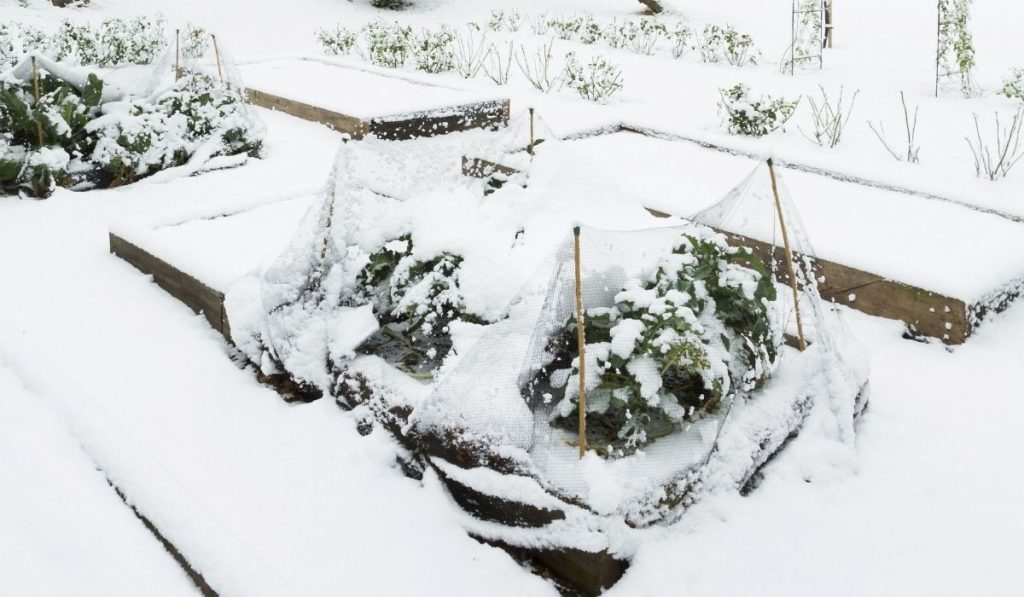As winter weather approaches, gardeners often ponder if covering beds with plastic sheeting over winter is beneficial. Black plastic mulch can warm soils, block weeds and potentially offer some frost protection. However, it also has downsides. Read on to learn whether covering your garden in plastic for winter is right for you.
Reasons Some Gardeners Use Plastic
Here are some potential benefits driving gardeners to use plastic
-
Warms soil – Black plastic absorbs and retains heat, which can warm the soil underneath by several degrees. This may help promote earlier spring growth.
-
Controls weeds – Thick plastic blocks sunlight, preventing weed seeds underneath from germinating. Less weeding come spring
-
Conserves moisture – Plastic minimizes evaporation, keeping soil underneath moist. Especially helpful in arid climates.
-
May deter pests – Some gardeners find the plastic barrier reduces tunneling insects and nematodes Evidence is anecdotal,
-
Possible frost protection – The insulating properties of plastic may protect covered plants from a degree or two of frost. Not reliable for hard freezes.
-
Takes up leftover plastic – A use for old tarps, painter’s drop cloths, etc. before throwing away. Repurposes what might go to waste otherwise.
Reasons to Avoid Covering with Plastic
However, there are also some potential drawbacks to consider:
-
Promotes rot and disease – Wet soil trapped under plastic becomes prone to fungal and bacterial issues. These may linger into spring.
-
Harms soil health – Anaerobic conditions under plastic inhibit beneficial microbial activity. Important organisms like earthworms may die off.
-
Kills cover crops – Any existing living mulch like clover will suffocate and die when covered for an extended period.
-
Traps pests – Slugs, snails and other pests may take shelter under plastic and thrive in the warm, moist conditions.
-
Looks bad – A big sheet of plastic covering a garden bed is an eyesore for many gardeners, and neighbors.
-
Blows away – Plastic gets brittle and tears over winter. Wind can rip it off beds and send it airborne if not secured well.
-
Creates plastic waste – Even biodegradable plastic leaves residue. Reusing plastic saves it from the landfill but delays proper disposal.
Best Practices for Using Plastic Over Winter
If you decide the benefits outweigh the risks, follow these tips:
-
Use UV-stabilized, heavy construction grade plastic. Thin plastic deteriorates quickly.
-
Secure edges very well with bricks, garden pins, or bury edges to prevent wind lift.
-
Cover beds in late fall after a few hard frosts to avoid trapping pests under the warmth.
-
Remove plastic in early spring as soon as soil thaws. Pull it off beds immediately at first sign of plant growth.
-
Fold up and reuse plastic if still intact. Properly dispose of any torn sections. Recycle if possible.
-
Replenish soil organic matter like compost after removing plastic.
-
Scout for any pest or disease issues and treat them early before planting.
Alternatives to Plastic for Winter Care
For gardeners concerned about plastic’s drawbacks, effective organic options exist:
-
Apply 3-6 inches of shredded leaves, straw or other mulch material instead. Provides insulation.
-
Grow cold-tolerant cover crops like winter rye or hairy vetch. They outcompete weeds and build soil.
-
Use breathable row covers and cold frames over beds and tunnels over paths. Allows air and water flow.
-
Amend soil with compost in fall to boost microbial activity and organic matter for spring.
-
Use organic pre-emergent corn gluten based weed preventers instead of plastic’s physical barrier.
-
Control overwintering pests with traps, diatomaceous earth or other organic measures instead of relying on plastic.
Covering gardens with plastic for winter has some potential benefits but also notable downsides. Gardeners must weigh if the rewards are worth the risks. Often organic materials and cold-tolerant crops can provide safer insulation and weed prevention without plastic’s pitfalls. Carefully assess your climate, soil needs and gardening priorities when deciding if plastic sheeting over winter makes sense for your beds.
Taking the proper steps to winterize your beds will help protect your tender perennials and keep things clean so that they’re ready for planting in early spring!
In Pennsylvania, raised garden beds are a popular way to grow vegetables, as well as annuals, perennials, and other beautiful plants. Since you choose the soil that goes in, you can be sure that it is loose, full of nutrients, and great at keeping water in. For even more gardening fun, the soil tends to thaw faster in the spring than soil that has been in the ground. You might have trouble with your raised garden bed once the snow melts, though, if you don’t properly prepare it for winter.
Step 2: Remove Garden Equipment
Take out any of your structural equipment like trellises, stakes, and tomato cages. It’s important to clean these things before putting them away for the winter. Fungal spores and other germs can live on dirty garden tools over the winter, so a good wipe-down with isopropyl alcohol will keep everything clean and germ-free. Once that’s all done, you’re ready to winterize!.
Garden Ground Covers To Eliminate Weeds Forever!
- The Ultimate Guide to Growing Strawberries in Raised Beds - August 8, 2025
- No-Dig Garden Beds: The Easiest Way to Grow a Beautiful Garden - August 6, 2025
- How to Protect and Preserve Wood for Raised Garden Beds - August 6, 2025

